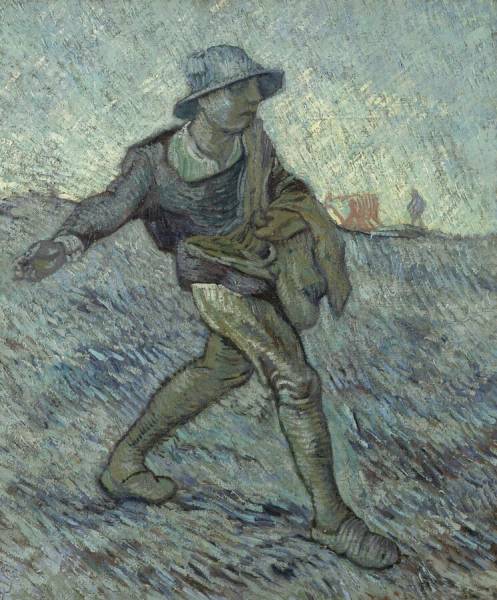” […] But we must never underestimate the power of planting a seed”
#PhilosophicalWednesday #10
“We cannot force someone to listen to a message they are not ready to receive. But we must never underestimate the power of planting a seed”
Jean-François Millet is the peasant painter par excellence: there are in fact numerous paintings dedicated to rural life, which take his workers as protagonists, a perfect expression of the realist current, undoubtedly led by Gustave Courbet, to whom Millet belonged, but from which he also detached in some ways.

Jean-François Millet, Des glaneuses, 1857 – Courtesy Musèe d’Orsay
In fact, he and his works lacked that instinct to denounce, which was instead replaced by an almost sentimental praise of those subjects for so long ignored and exclusive to the artistic representation, and on which all the attention is concentrated in the realization of his works.
We therefore impersonate ourselves in the hard work of The Gleaners (Des glaneuses), in the concentration of The Winnover (Un Vanneur), in the moment of pause and devotion of Angelus, or in the solemnity of the gesture of The Sower (Le Semeur), which in scattering the seeds that over time will grow becomes the perfect representation to express the meaning of the sentence of this Philosophical Wednesday.

Jean-François Millet, The Sower, 1850 – Courtesy Museum of Fine Arts Boston
The fatigue of the work is rewarded by the future growth it starts, so a metaphorical seed “planted” in someone could one day blossom and lead to something equally wonderful.
The key is in patience, both in cultivation and in life: one cannot expect that an action of this kind will immediately result in a reaction, but it is in making this gesture to the best of one’s ability and waiting patiently for the possible result that achieves it.

Vincent Van Gogh, The sower (after Millet), 1890 – Courtesy Kroller Muller
Thus the figure of the sower becomes a symbol of a positive attitude, with inevitable iconographic success also in the history of art: for example, it will be Van Gogh who will take back Millet and his sower in a tribute to the master, as well as in two other very personal versions.

